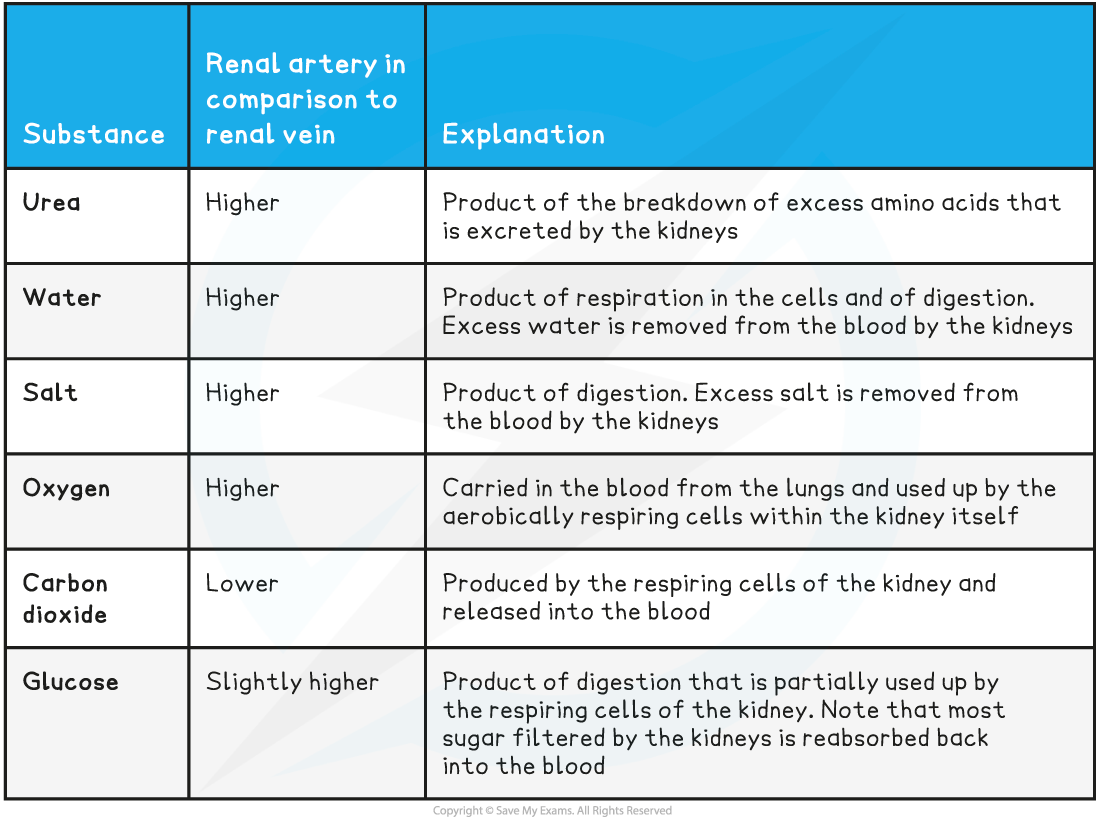Organisms & Osmolarity in the Environment
- Living organisms need to maintain a safe balance of water and solutes in their cells
- Failure to maintain this balance will mean that an organism's cells could either take on water and burst, or lose water and shrink due to the effects of osmosis
- Cells with a higher osmolarity than their surrounding environment will gain water by osmosis and the resulting internal pressure increase could cause the cell to burst
- Note that plant cells are protected from bursting by their strong cell walls
- Cells with a lower osmolarity than their surrounding environment will lose water by osmosis and the resulting drop in internal pressure will cause the cell to shrink
- Cells with a higher osmolarity than their surrounding environment will gain water by osmosis and the resulting internal pressure increase could cause the cell to burst
- Organisms avoid the cell damage that can result from water gain or loss by either osmoconforming or osmoregulating
- Osmoconforming means that the osmolarity of an organism's body fluids matches that of its surroundings
- Examples of osmoconformers include marine invertebrates such as mussels, lobsters, and jellyfish, as well as some unusual groups of fish such as sharks and hagfish
- Osmoconforming is achieved by retaining ions from the environment in the body fluids, or in the case of sharks by retaining the urea produced in metabolism
- Some osmoconformers have the ability to change their internal osmolarity over a large range when their environment changes
- Osmoregulation means maintaining a constant body fluid osmolarity regardless of the osmolarity of the external environment
- Examples of osmoregulators include land animals, marine mammals, most fish, and amoebas (singled-celled eukaryotes)
- Amoebas use an organelle called a contractile vacuole to carry out osmoregulation; as the cell takes on water by osmosis, the water moves into the contractile vacuole, which then moves to cell surface membrane, fuses with it, and releases its contents outside the cell
- Osmoregulators must balance retention of water with the concentration of other molecules in their body fluids, such as sugars, salts, and amino acids
- Examples of osmoregulators include land animals, marine mammals, most fish, and amoebas (singled-celled eukaryotes)
- Osmoconforming means that the osmolarity of an organism's body fluids matches that of its surroundings
The Malpighian Tubule System
- Osmoregulation is the process by which the balance of water and solutes in the body fluids of an organism is maintained
- In vertebrates osmoregulation is carried out by kidneys
- Kidneys remove nitrogenous waste as well as any unwanted sugars and salts from the blood
- Nitrogenous waste is produced when there are excess amino acids present after the digestion of dietary protein
- Amino acids cannot be stored, so are converted first to toxic ammonia, then to a less toxic form; in humans this is urea, while some other animals e.g. birds and insects produce uric acid
- The urea or uric acid can then be safely excreted from the body
- Kidneys remove nitrogenous waste as well as any unwanted sugars and salts from the blood
Osmoregulation in insects
- Insects that live on land osmoregulate using a specialised system of malpighian tubules
- Malpighian tubules are a series of small tubes that extend from the body cavity and drain into the insect's digestive system
- Insects do not technically have blood but instead have a fluid known as haemolymph within the body cavity which surrounds the internal organs
- The malpighian tubule system removes nitrogenous waste, salts, and water from the haemolymph, enabling the excretion of nitrogenous waste in the form of uric acid
- The tubules are lined with cells that actively transport ions such as sodium (Na+) and potassium (K+) from the haemolymph into the tubule lumen, raising the osmolarity and altering the charge of the lumen contents
- Water moves into the lumen from the haemolymph by osmosis
- Nitrogenous waste enters the tubules from the haemolymph along an electrical gradient
- The ions, water, and nitrogenous waste drain from the malpighian tubules into the digestive system
- Nitrogenous waste is converted into uric acid
- Useful salts and water are reabsorbed from the hindgut into the haemolymph
- Uric acid remains in the digestive system, from which it later leaves the body along with faeces

Terrestrial insects use the malpighian tubule system to remove nitrogenous waste from their bodies in the form of uric acid
Exam Tip
Don't get too bogged down in the exact details of the processes taking place inside the Malpighian tubules, just make sure that you can outline the events e.g.
- Small molecules such as salts and nitrogenous waste are actively transported from the haemolymph into the malpighian tubules
- Water follows by osmosis
- The malpighian tubules drain into the insect's digestive tract
- Useful substances such as salts and water are reabsorbed from the gut, while uric acid is excreted
Blood Composition in the Renal Blood Vessels
- The kidneys have two important roles in the human body
- They remove the toxic products of metabolism from the blood
- They maintain the balance of water and solutes in the blood
- Blood enters the kidney from the body through the renal artery and leaves the kidney to return to the body in the renal vein
- The composition of the blood changes as it passes through the kidneys due to
- The removal of waste
- The adjustment of the balance of solutes and water
- Respiration taking place in the cells of the kidney
- The blood entering the kidney via the renal artery therefore has a different composition to the blood leaving the kidney via the renal vein
Blood composition in the renal blood vessels table

